In Le Marche, if you ask any local which town is known as the Balcony of Le Marche, they will all answer the same: Cingoli. Located over 600 meters above sea level on the slopes of Monte Circe, it offers one of the widest views in the region, reaching from the Apennines to the Adriatic Sea.
Cingoli has a long history that goes back to Roman times and still preserves much of its medieval layout. Today it’s known for its panoramic terrace, historical buildings, and nearby lake, making it a practical stop for anyone exploring the central Marche area.
Things To Do In Cingoli
Historic Centre and City Walls
Cingoli’s historic centre is surrounded by medieval walls that still define its structure today. Entering through Porta Piana, one of the main gates, you reach Piazza Vittorio Emanuele II, the heart of the town, where the Cathedral of Santa Maria Assunta stands. Nearby are several historic buildings, including Palazzo Comunale, Palazzo Conti, and the Church of San Filippo Neri.
The layout of the town follows the lines of the ancient Roman settlement of Cingulum, founded by Titus Labienus in the 1st century BC. Its narrow streets and brick facades preserve the appearance of a fortified town, while small panoramic terraces along the walls, especially near Porta del Lago, provide wide views over the hills and valleys below. Walking through the centre is the best way to understand Cingoli’s strategic position and long history.
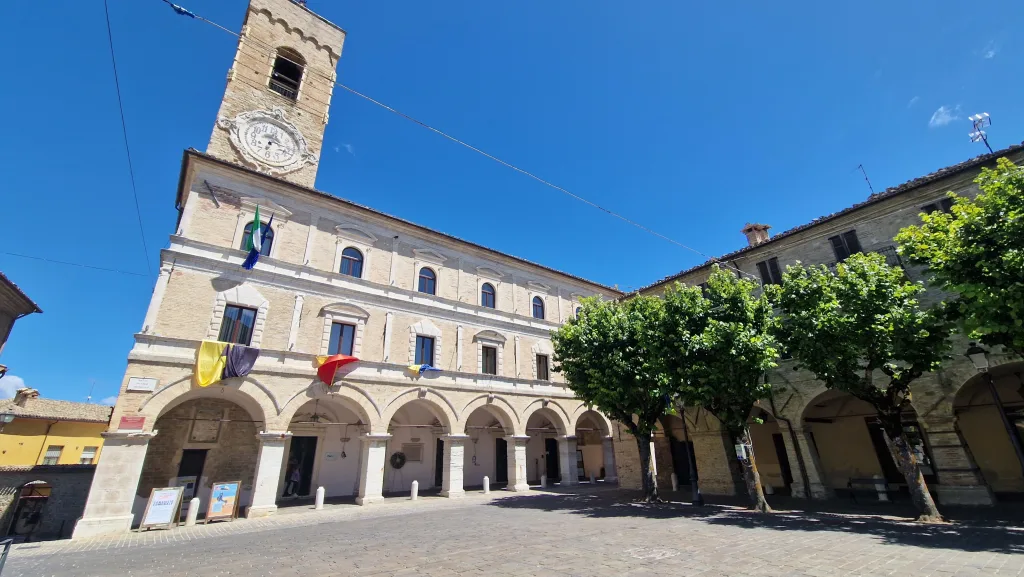

The Palazzo Comunale (Town Hall) is also home to the Madonna del Rosario by Lorenzo Lotto dated 1539. This canvas, now kept in the Sala degli Stemmi, is nearly four meters high and is complex and rich in symbolism. The rose garden that occupies about half of the painting contains fifteen medallions representing the joyful, sorrowful, and glorious Mysteries of the Rosary.

Belvedere Balcone delle Marche
The Belvedere at Balcone delle Marche is the main panoramic terrace of Cingoli and the reason behind its nickname. Located near Porta Piana, it overlooks a vast section of central Italy, on clear days you can see from the Mount Conero area on the Adriatic coast to the Sibillini Mountains inland. The viewpoint is easily accessible from the historic centre and marked with orientation panels showing visible landmarks. It’s one of the most visited spots in town and a good place to understand the geography of the region and why Cingoli was historically considered a strategic lookout point.
Tip: there are a couple of bars at the terrace, so you can enjoy the view while sipping a drink.
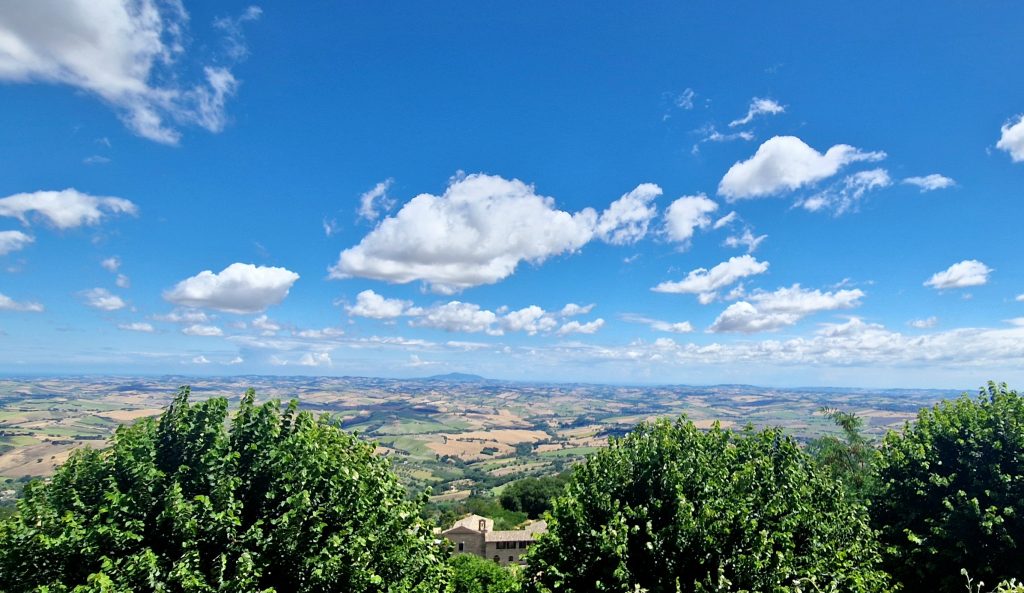
Cingoli Lake, Castreccioni
A few kilometres below the town lies Lago di Cingoli, also known as Lago di Castreccioni, the largest artificial lake in Le Marche. Formed by a dam on the Musone River, it serves both hydroelectric and recreational purposes. The lake is surrounded by hills and farmland, making it a popular spot for short walks, cycling, and picnics. In summer, the water takes on characteristic bright blue reflections, a feature that makes it one of the most photographed natural sites in the area. Visitors can rent kayaks or pedal boats, and several equipped areas along the shore offer picnic tables and refreshment points.

Carosello Ultimo Sole
The Carosello dell’Ultimo Sole (Carousel of the Last Sun) is one of Cingoli’s most distinctive installations. Built in 2017 and located on Via della Portella, it features a mechanical clock that, every evening about 40 minutes before sunset, plays the songs “Il Pescatore” and “La Collina,” offering visitors a simple but meaningful local experience.

Roman Bridge, Cascatelle and Mill
The Ponte dell’Intagliata, often called the Ponte Romano (Roman Bridge), is located a few kilometres from Cingoli along the Fiume Musone. Despite its name, it dates back to the 11th–12th century and was probably part of the medieval road system connecting Cingoli to Apiro. Built in local stone with a single arch, it crosses a narrow section of the river surrounded by rock walls and vegetation. A short marked path leads from the road to the bridge, where you can also visit the nearby Mulino Bravi, a fully functional water-powered mill that still produces flour using traditional methods. Along the stream, you can also find the Cascatelle, just a little waterfall.
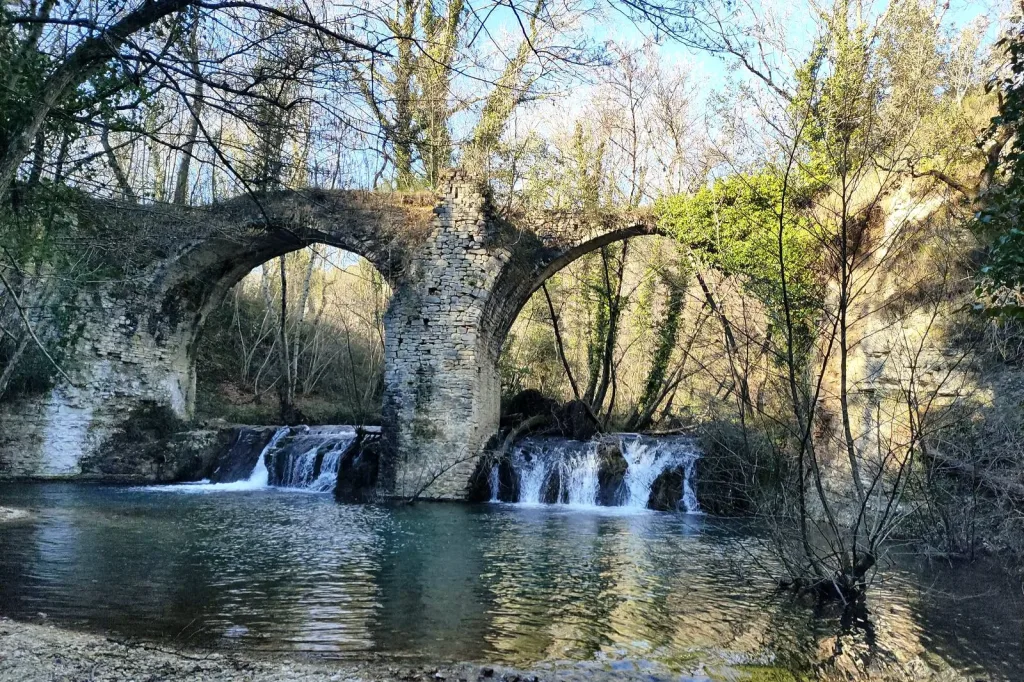
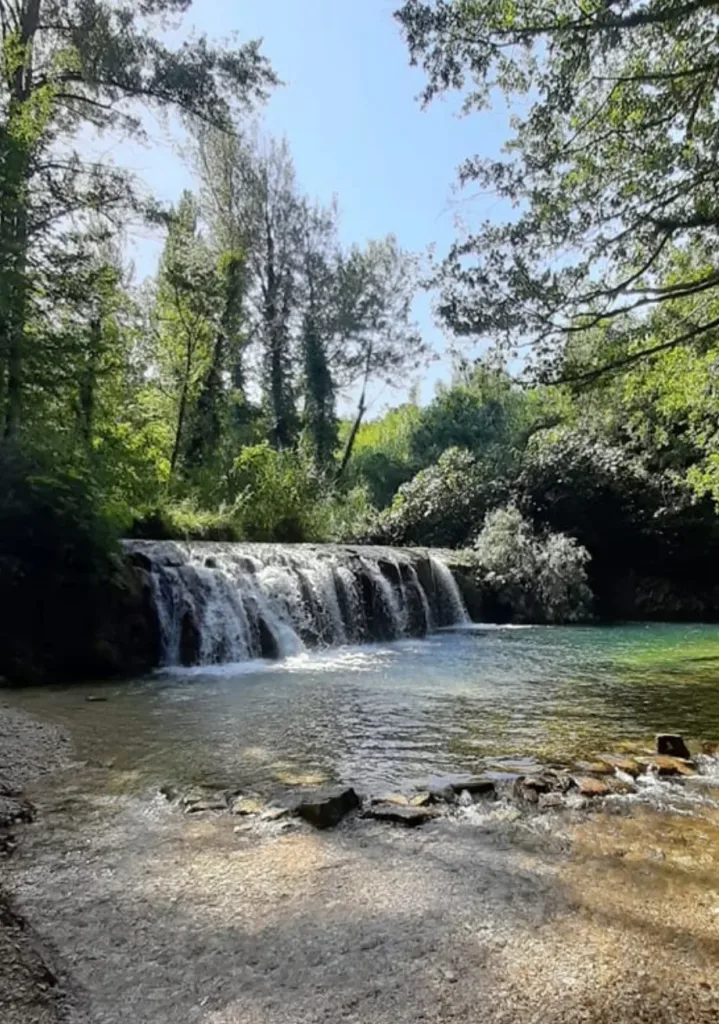
The Roman Bridge, Castatelle and the Mill are all along the river Musone, set your car navigation to Frazione Pozzo, Cingoli, and you will find them.
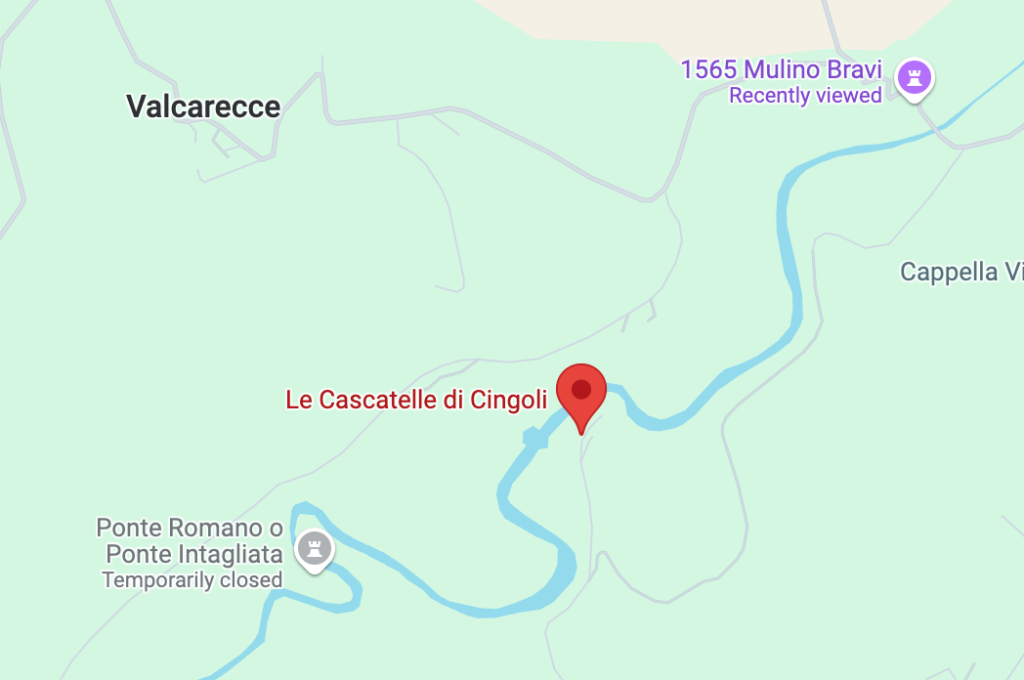
Chiesa San Vitale (dei Mammocci)
The Chiesa di San Vitale, also known locally as the dei Mammocci, is located in the countryside of the neighbouring (frazione) Torrone, outside the town of Cingoli. On its left-side exterior wall there are six stone statuettes (mammocci) housed in niches, giving the church its nickname. The building likely originated as part of a castle structure and was later adapted into a church, this is evident from the remains of a medieval tower at the rear. Inside it features a single nave with visible pointed arches uncovered during restoration work following the 1996 earthquake.
Visiting tip: The site is modest and not always open, you may need to contact the local Pro Loco or a nearby resident to request access.
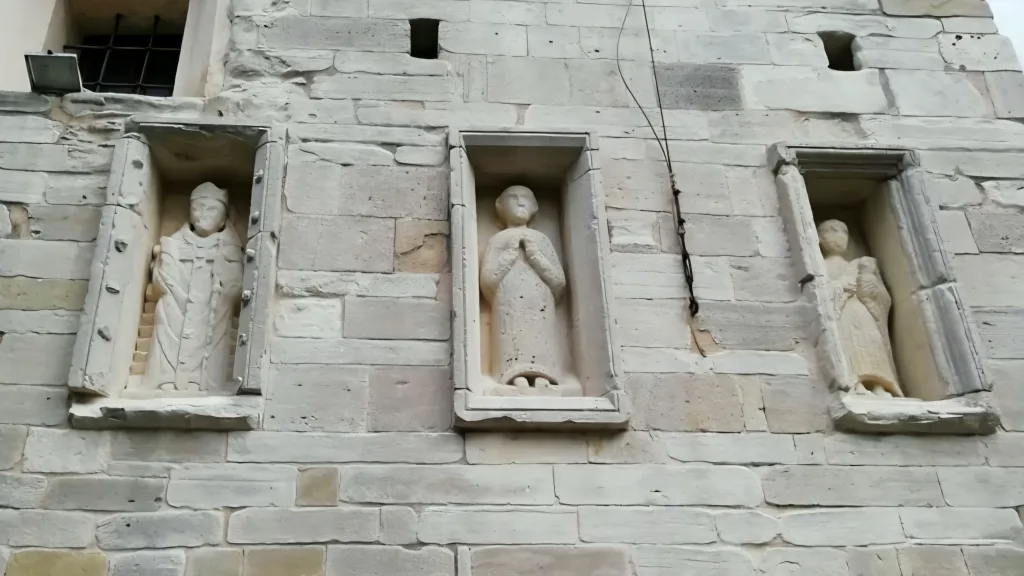
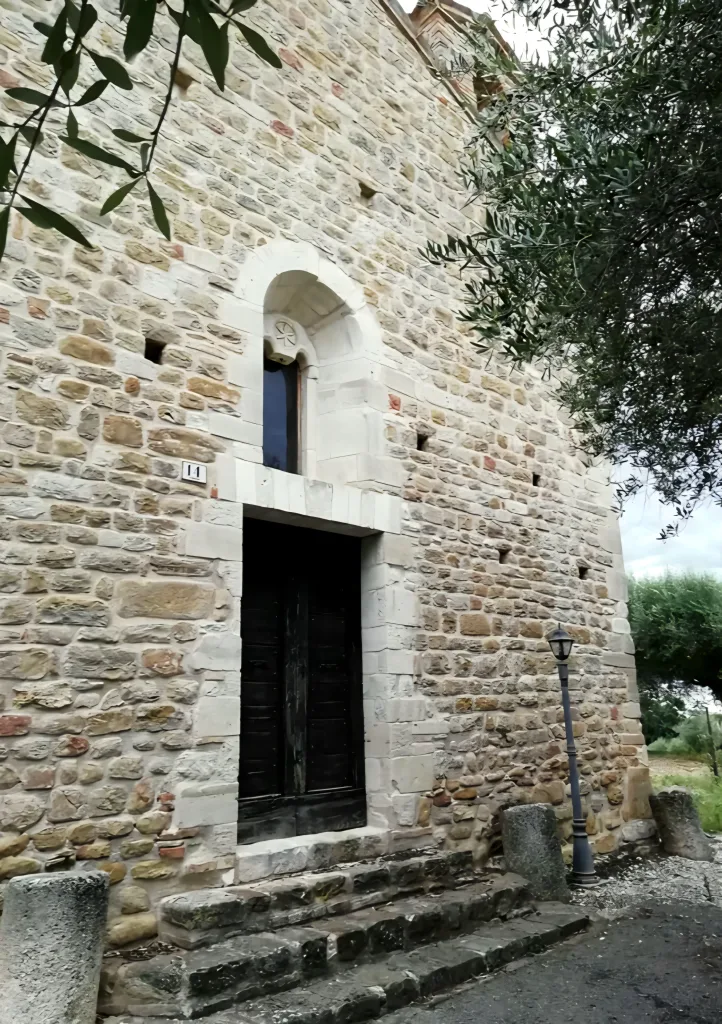
Experience Cingoli’s Festivals
- Cingoli Music Festival (end of August): in Viale Valentini, this music-event features live bands and DJs.
- Any Sagra/feast in August: likely to be in Viale Valentini, food trucks, live music, local street food.
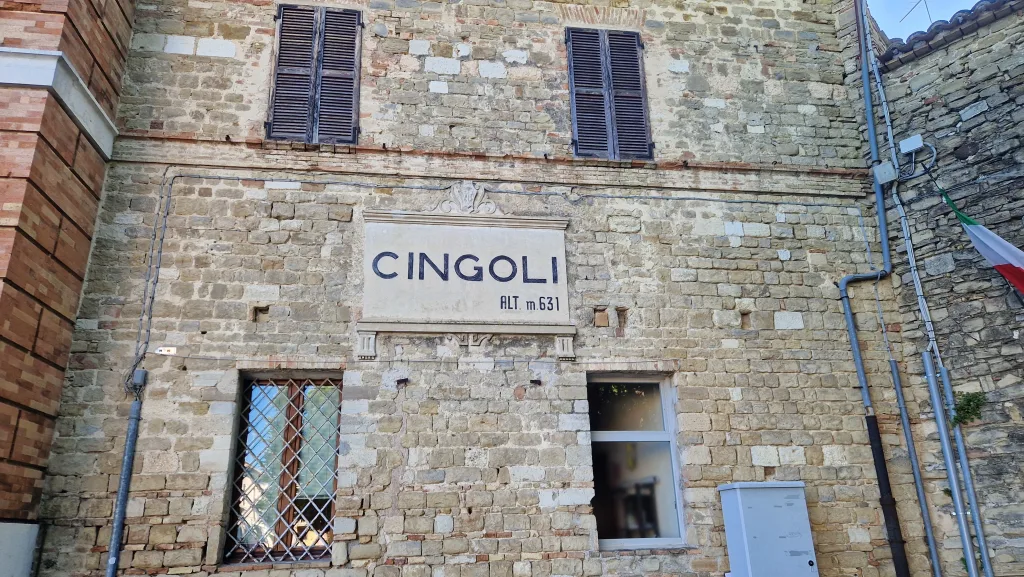
Explore the Surrounding Hills
Cingoli is well-positioned for short trips to other important destinations in central Le Marche. To the northeast lies Jesi, a historic walled town known for its medieval centre and Verdicchio wine. About 35 kilometres away, the Frasassi Caves near Genga offer one of Italy’s most impressive underground routes open to visitors. To the south, Treia is another well-preserved hill town with elegant buildings and strong local traditions, including the annual Disfida del Bracciale historical game.
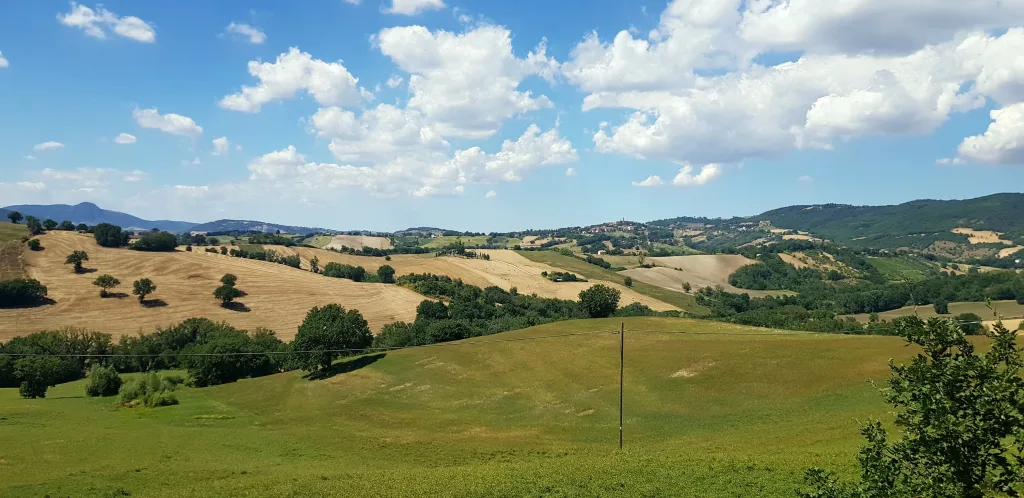
Accommodations near Cingoli
Here are some options for accommodations near Corinaldo:
Guided Activities near Cingoli
A list of guided and bookable activities can be found below:


Comments are closed.